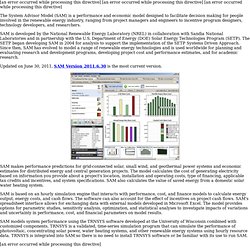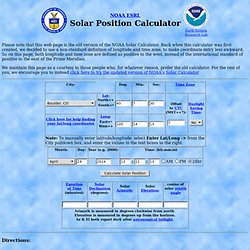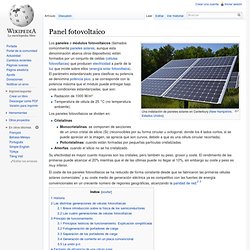

Documentation - Solar Module for Arduino. Contents Go to IndexIntroduction Ingredients: 1 x Solar module for Arduino 1 x Li-Ion Battery 2 x Wires (red and black) 1 x Solar pannel 1 x USB power supply 1 x mini USB cable Difficulty: Easy - Preparation Time: 15 minutes Go to IndexStep 1: The Solar module for Arduino The board is based on a charger for Li-ion batteries and a DC-DC converter to supply the 5V. the SquidBee mote needs, and includes three different inputs: a couple of pin connectors (VCC and GND) for more than 6V cells, another couple of pin connectors for up to 6V cells and a mini USB connector.

We have selected a MAX1555 charger from Maxim to energize the battery. A MAX1674 converts the 3.7V. that we approximately have in the output of the battery into the 5V. the SquidBee mote needs to work. We have also placed some capacitors of 100nF and 47uF in the inputs and in the output to the SquidBee in order to prevent noise from entering the circuit through the supply source. Go to IndexStep 3: Video-Tutorial Download.
CTE. Www.autogeneracionresidencial.com. Sistema mixto inyección y aislado - Foros de energía solar. Inversor para inyectar corrientes sinusoidales en una red de corriente alterna. La invención se refiere a un inversor para alimentar corrientes sinusoidales en una red ca.

El objeto de la invención es el de mejorar la capacidad de resistir cortocircuitos y reducir el peligro de (ver mas) La invención se refiere a un inversor para alimentar corrientes sinusoidales en una red ca. Generación de potencia eléctrica « Polo Estable. Como se ha ido viendo durante esta serie de artículos, existen muchas maneras de implementar el MPPT y existen también variaciones para cada una de ellas.

En este artículo se ofrece un resumen de las características de cada una que puede ayudar a elegir la técnica más apropiada para cada caso y dos tablas que recogen dicha información para las distintas técnicas. En primer lugar, la facilidad de implementación y de mantenimiento es un factor importante a la hora de elegir que depende en gran medida del usuario final. Algunos pueden estar más familiarizados con la circuitería analóigca, mientras que otros pueden preferir implementaciones digitales aunque requieran programación o el uso de software especial. Photovoltaic Geographical Information System (PVGIS) News 18.11.2013: PVGIS updated to use Google Maps version3.

Click here to read about it. 11.02.2013: New updated version of PVGIS. Click here to read about it. 11.02.2013: L'interface web PVGIS est maintenant disponible en français. The World's leading provider of compound semiconductor and lighting products. Solar Advisor Model (SAM) [an error occurred while processing this directive] [an error occurred while processing this directive] [an error occurred while processing this directive] The System Advisor Model (SAM) is a performance and economic model designed to facilitate decision making for people involved in the renewable energy industry, ranging from project managers and engineers to incentive program designers, technology developers, and researchers.

SAM is developed by the National Renewable Energy Laboratory (NREL) in collaboration with Sandia National Laboratories and in partnership with the U.S. Department of Energy (DOE) Solar Energy Technologies Program (SETP). The SETP began developing SAM in 2004 for analysis to support the implementation of the SETP Systems Driven Approach. Updated on June 30, 2011, SAM Version 2011.6.30 is the most current version. SAM models system performance using the TRNSYS software developed at the University of Wisconsin combined with customized components.
Insolation. US annual average solar energy received by a latitude tilt photovoltaic cell (modeled) Absorption and reflection[edit] The object or surface that solar radiation strikes may be a planet, a terrestrial object inside the atmosphere of a planet, or an object exposed to solar rays outside of an atmosphere, such as spacecraft.

Some of the radiation will be absorbed and the remainder reflected. Usually the absorbed solar radiation is converted to thermal energy, causing an increase in the object's temperature. Manmade or natural systems, however, may convert a portion of the absorbed radiation into another form, as in the case of photovoltaic cells or plants. Solar Position Calculator. Please note that this web page is the old version of the NOAA Solar Calculator.

Back when this calculator was first created, we decided to use a non-standard definition of longitude and time zone, to make coordinate entry less awkward. So on this page, both longitude and time zone are defined as positive to the west, instead of the international standard of positive to the east of the Prime Meridian.
We maintain this page as a courtesy to those people who, for whatever reason, prefer the old calculator. For the rest of you, we encourage you to instead click here to try the updated version of NOAA's Solar Calculator Directions: Select a location from the City pulldown menu, OR select "Enter Lat/Long ->" from the pulldown menu, and manually enter the latitude, longitude and time zone information in the appropriate text boxes. Terrestrial Solar Cells and Receivers. Panel fotovoltaico. Los paneles o módulos fotovoltaicos (llamados comúnmente paneles solares, aunque esta denominación abarca otros dispositivos) están formados por un conjunto de celdas (células fotovoltaicas) que producen electricidad a partir de la luz que incide sobre ellos (energía solar fotovoltaica).

El parámetro estandarizado para clasificar su potencia se denomina potencia pico, y se corresponde con la potencia máxima que el módulo puede entregar bajo unas condiciones estandarizadas, que son: Fiber Optics · Solar Power. MANUAL DE ENERGIA EOLICA. Tecnología solar.